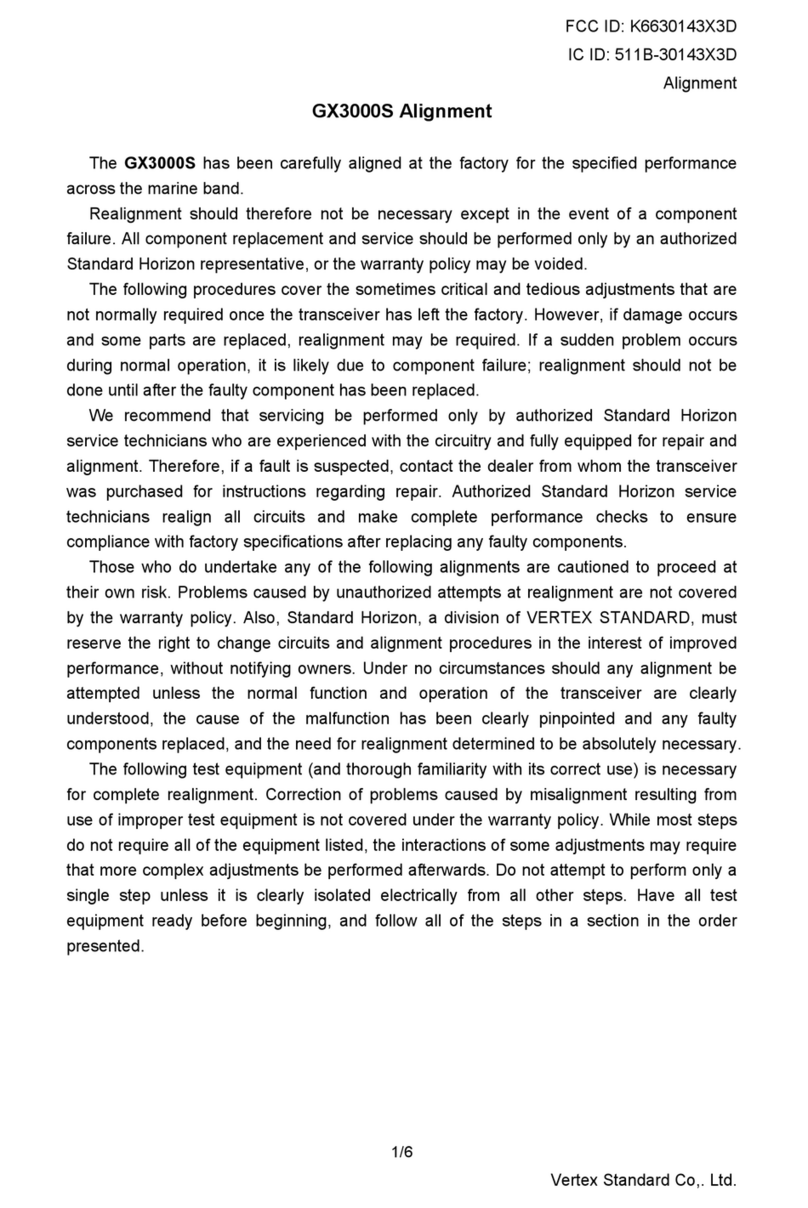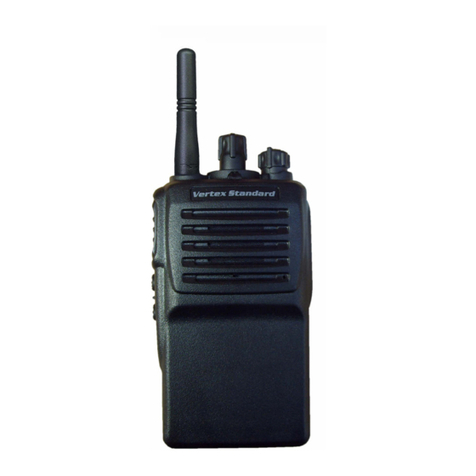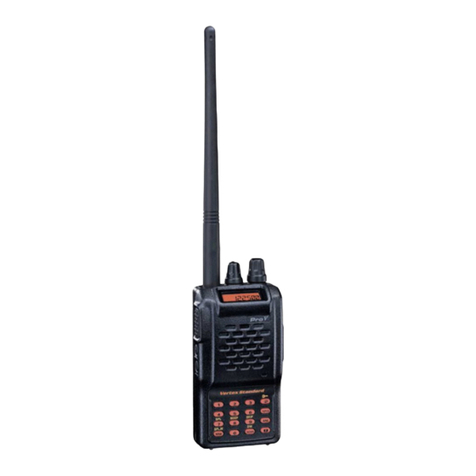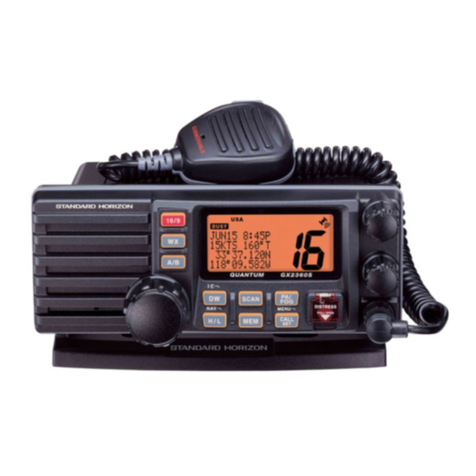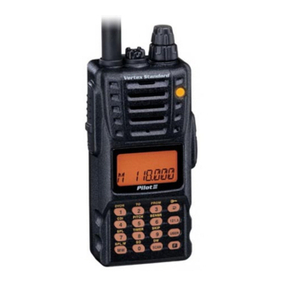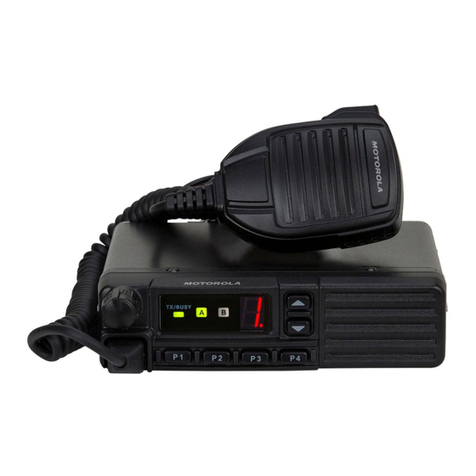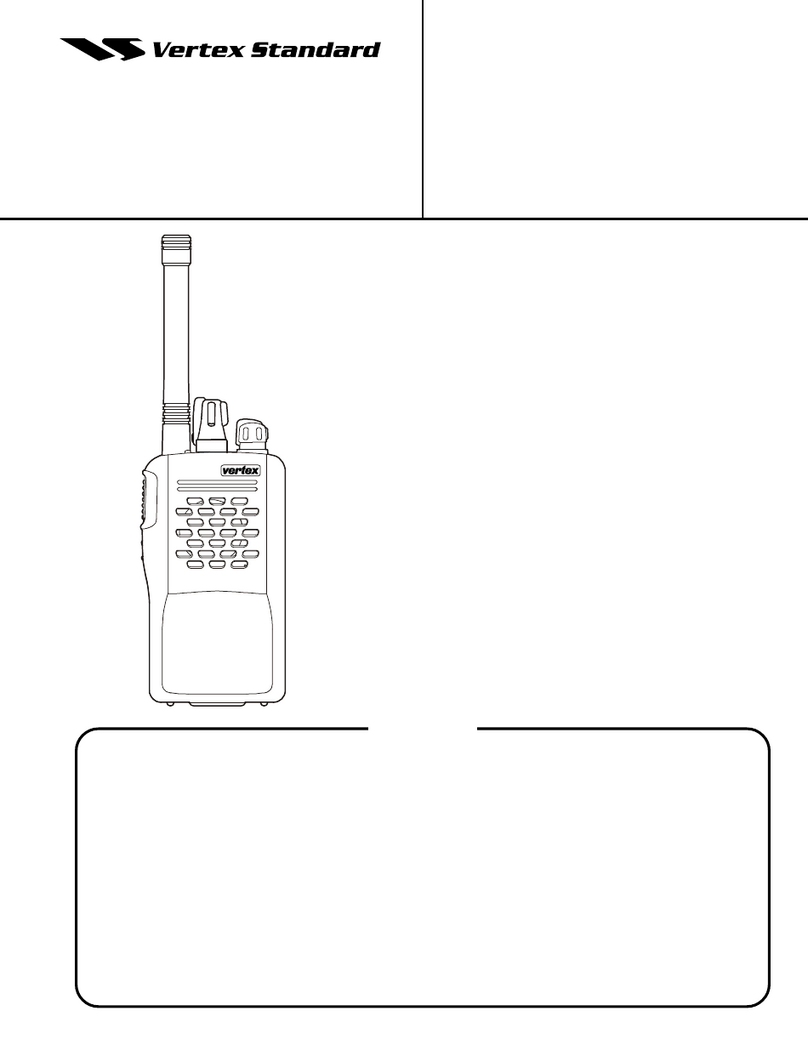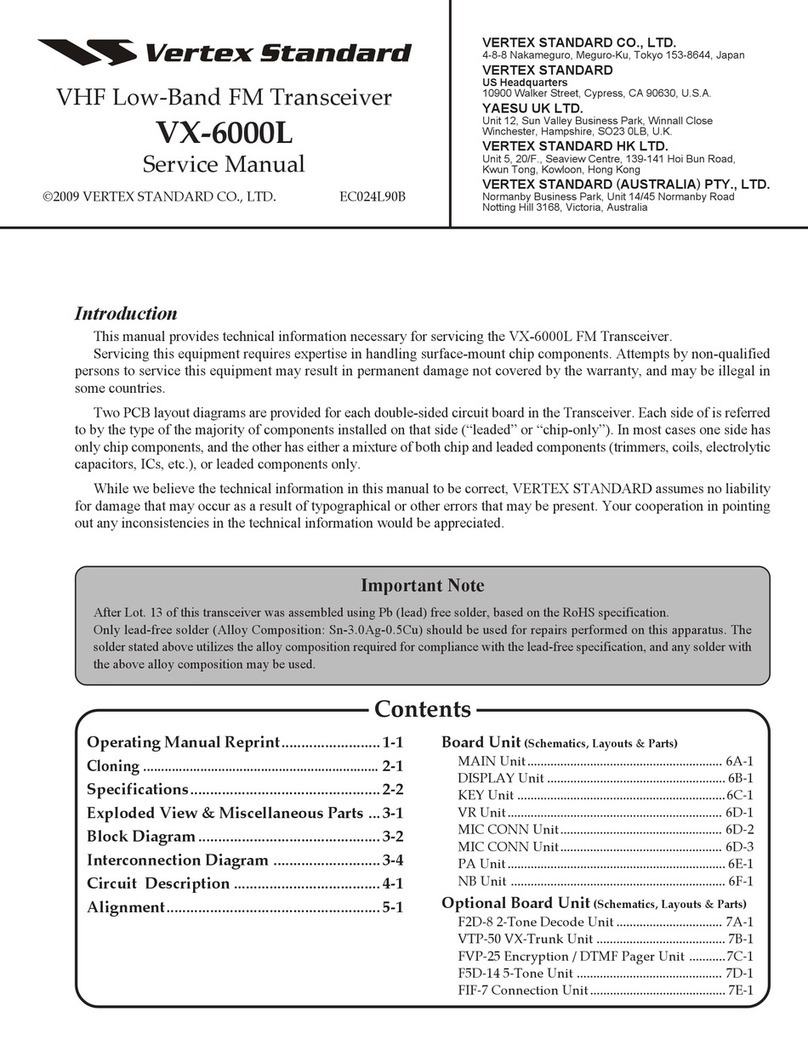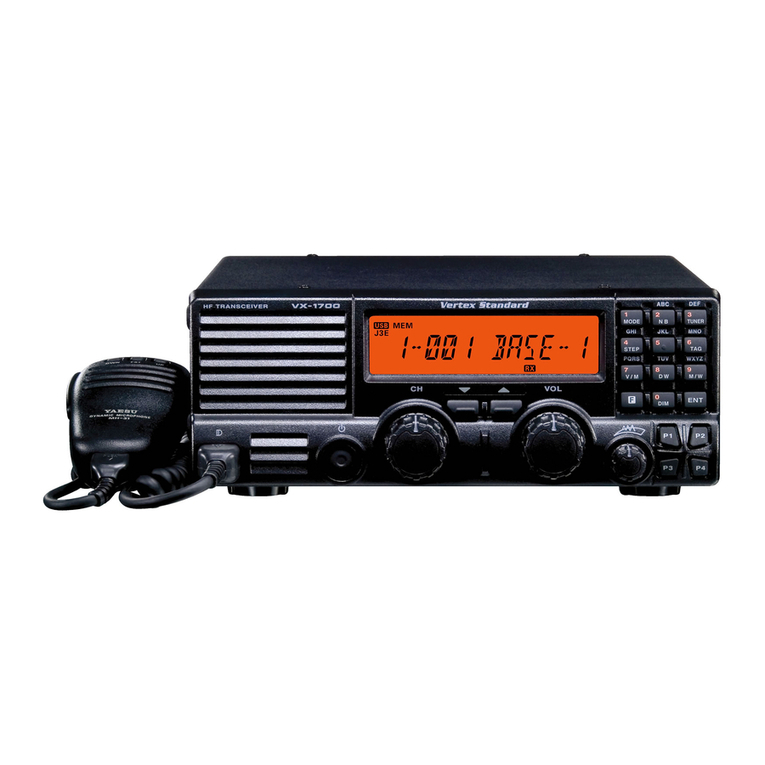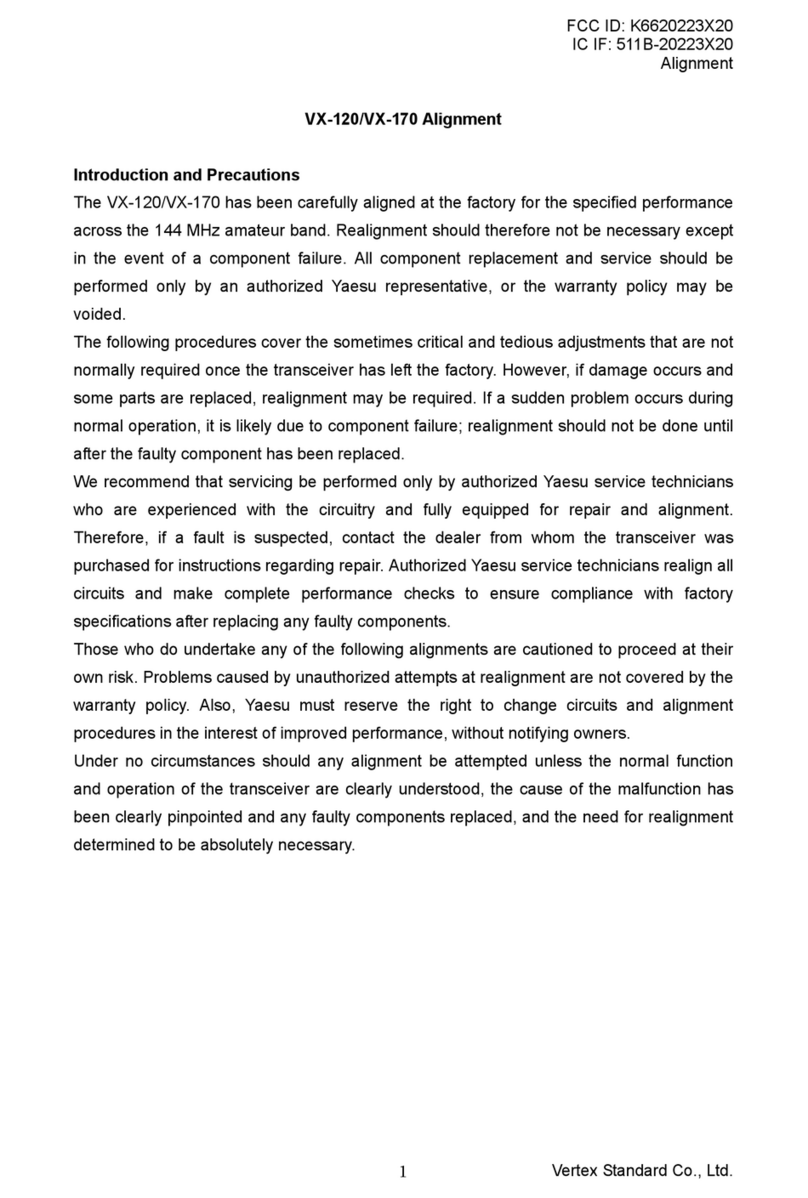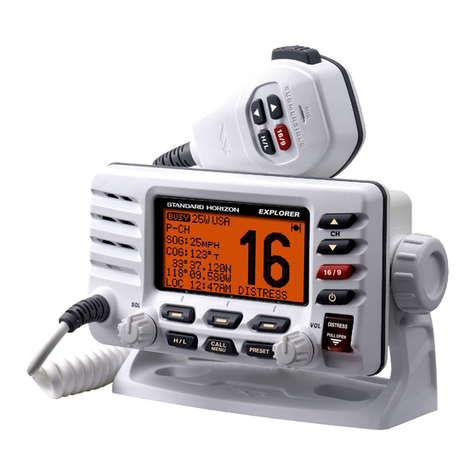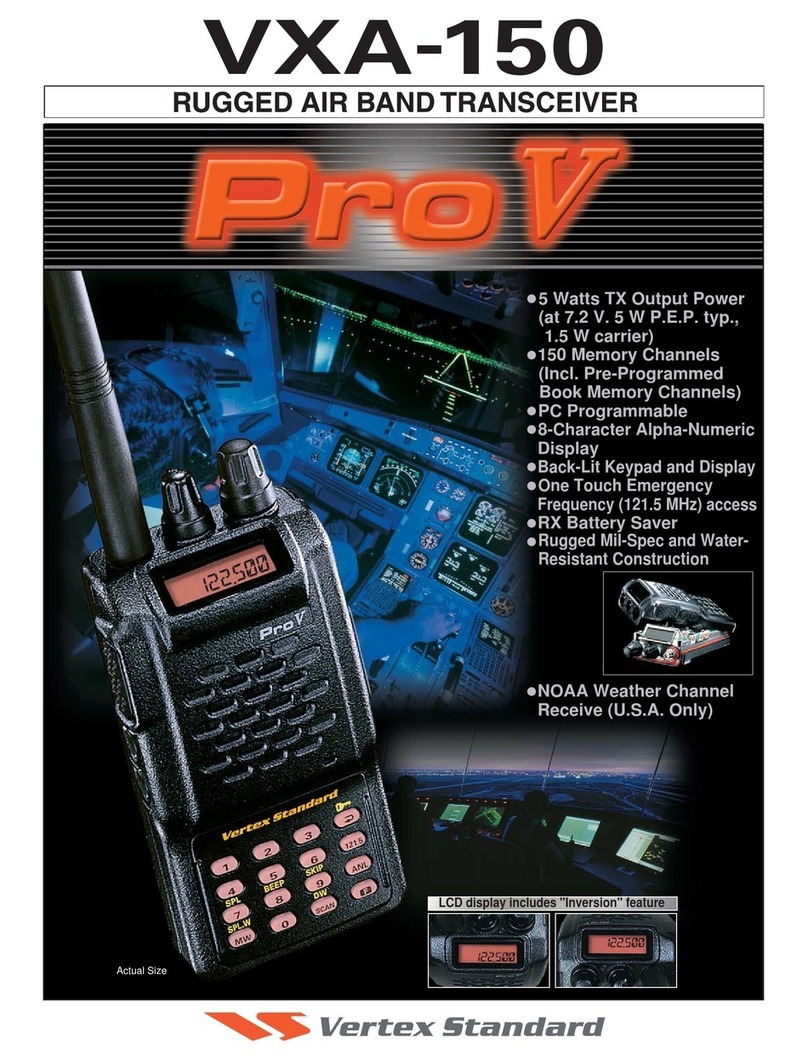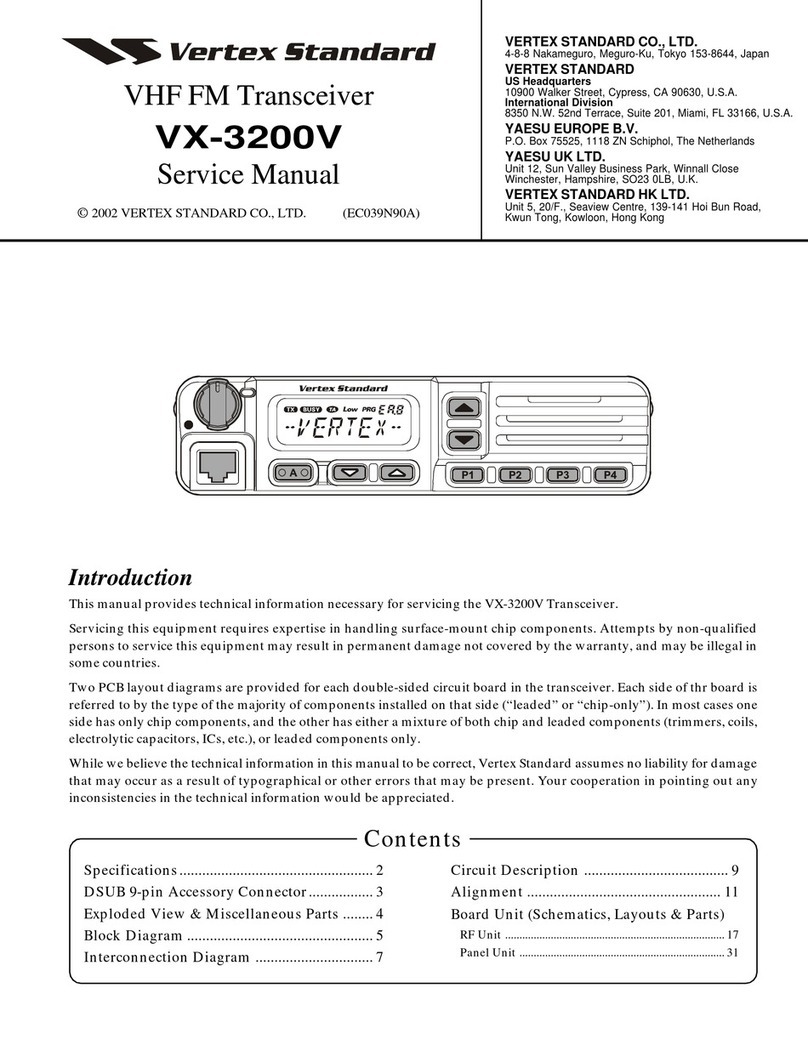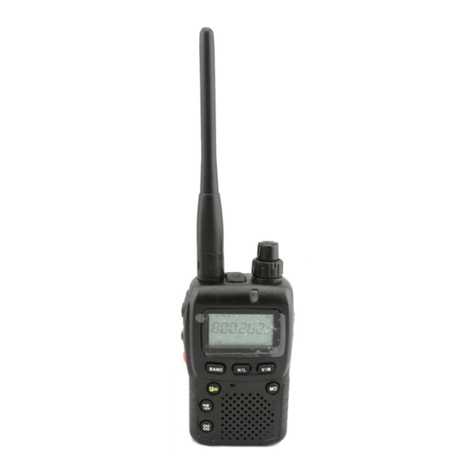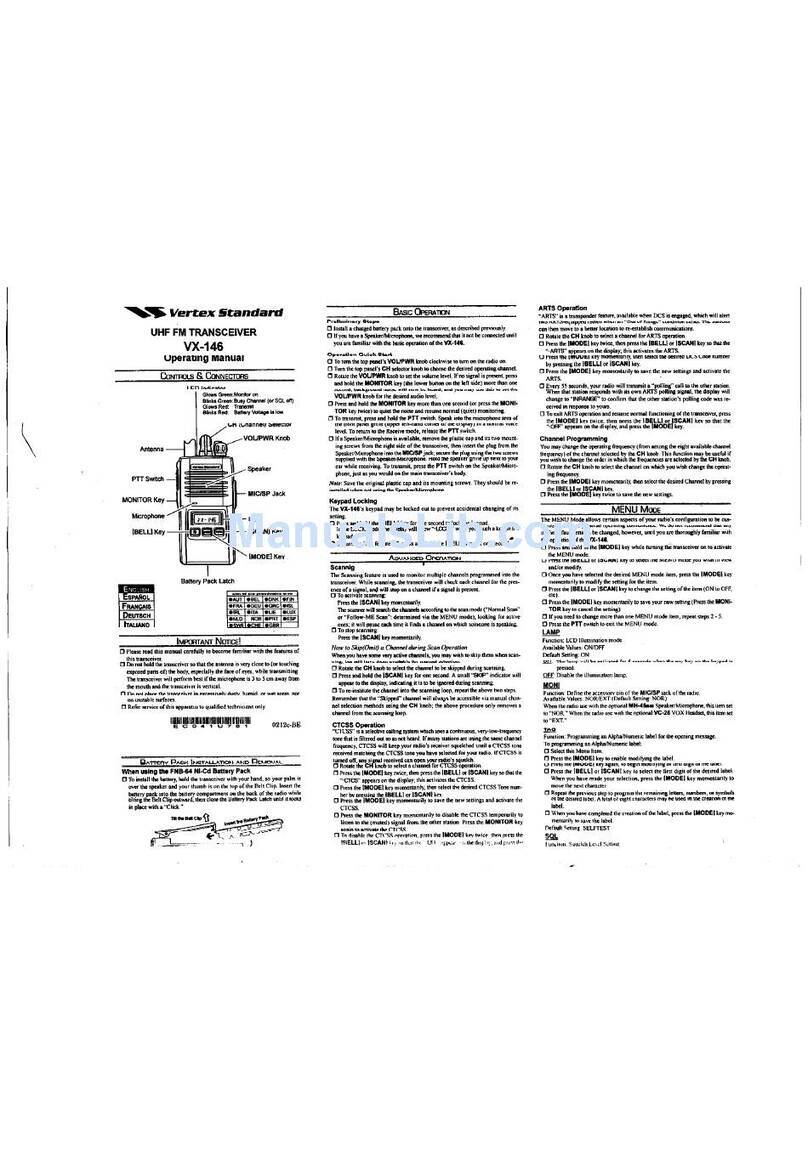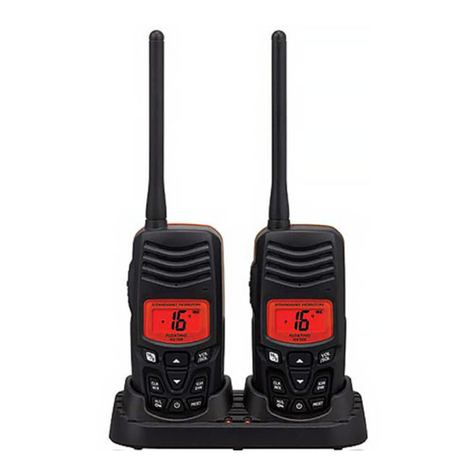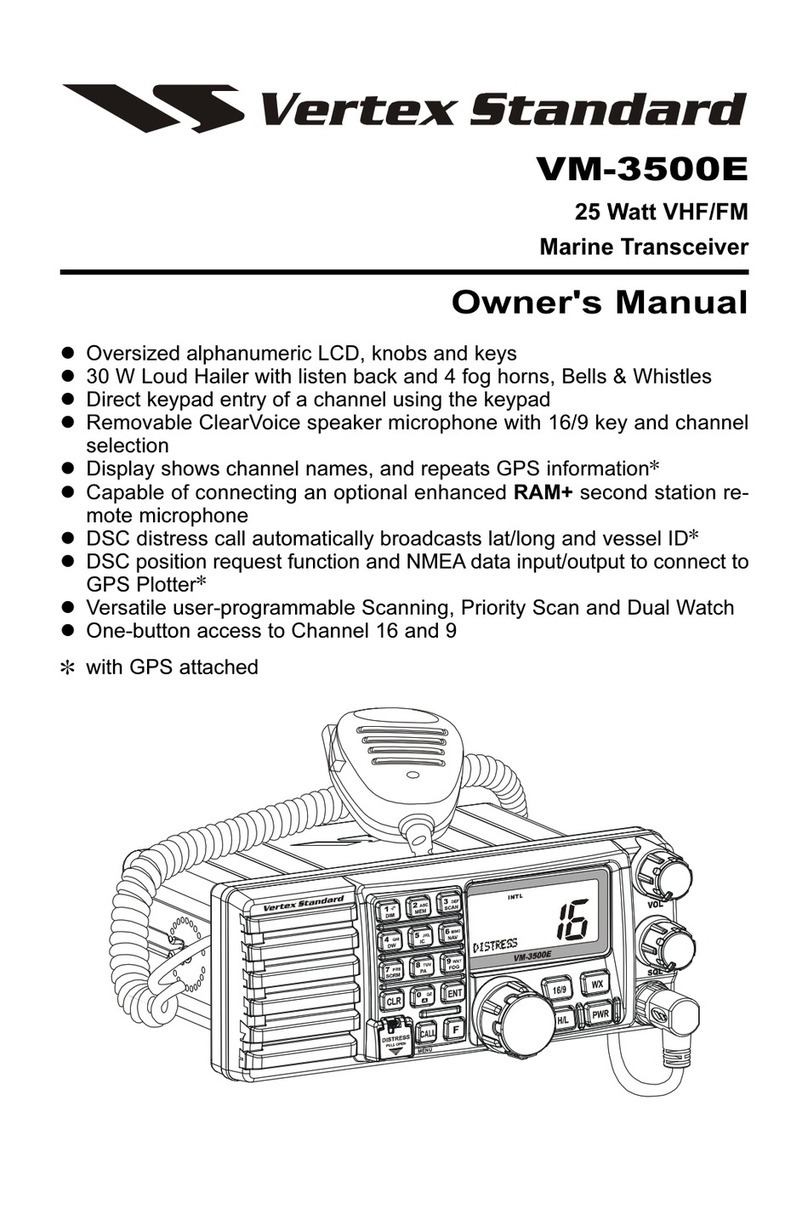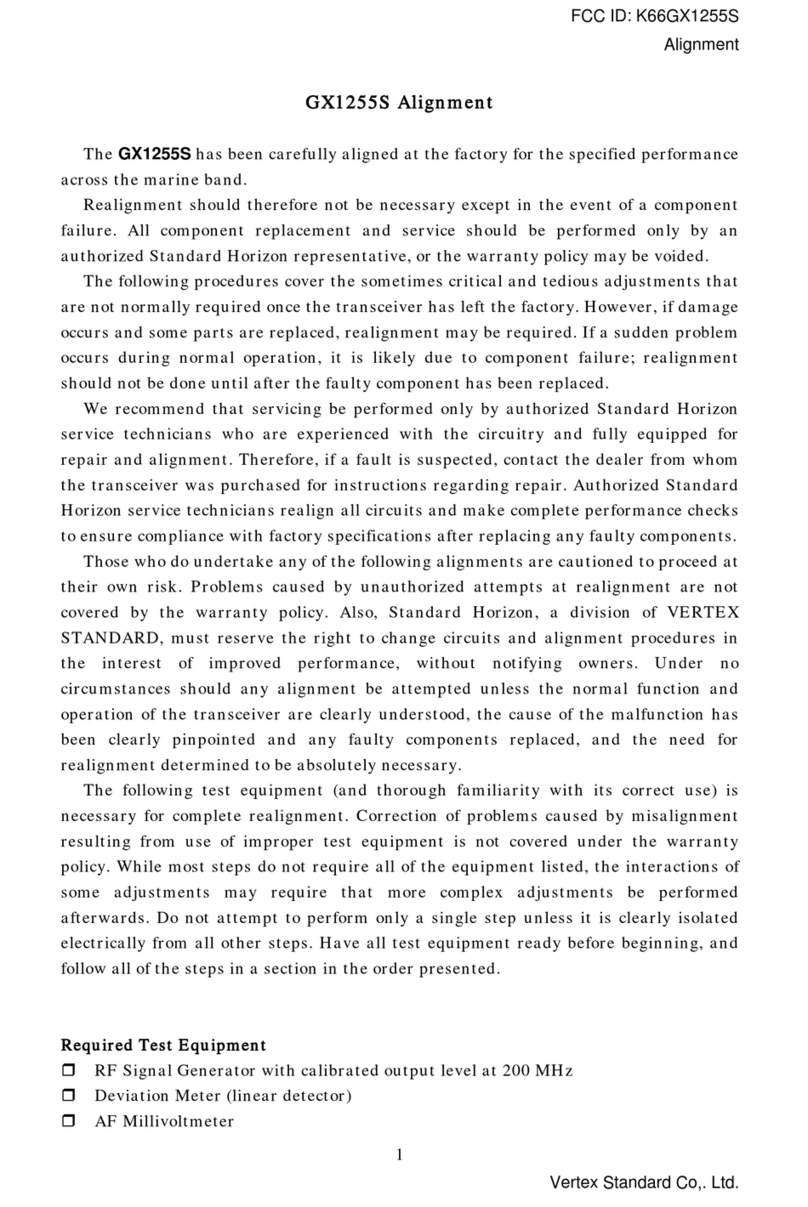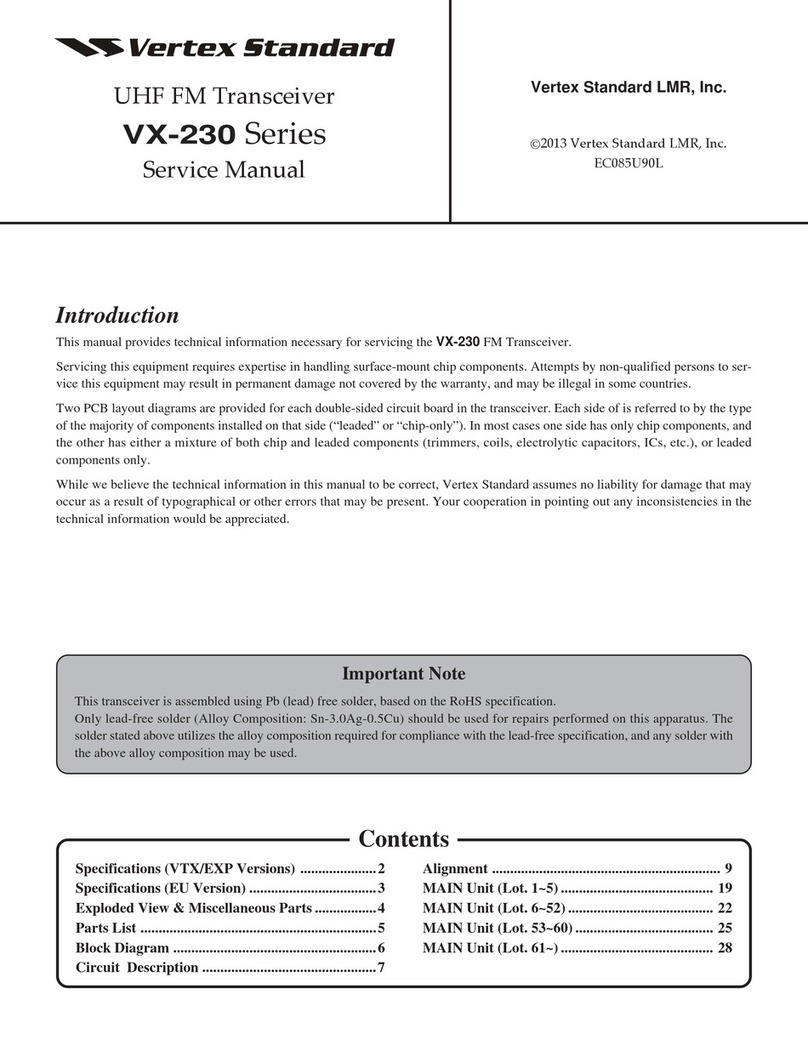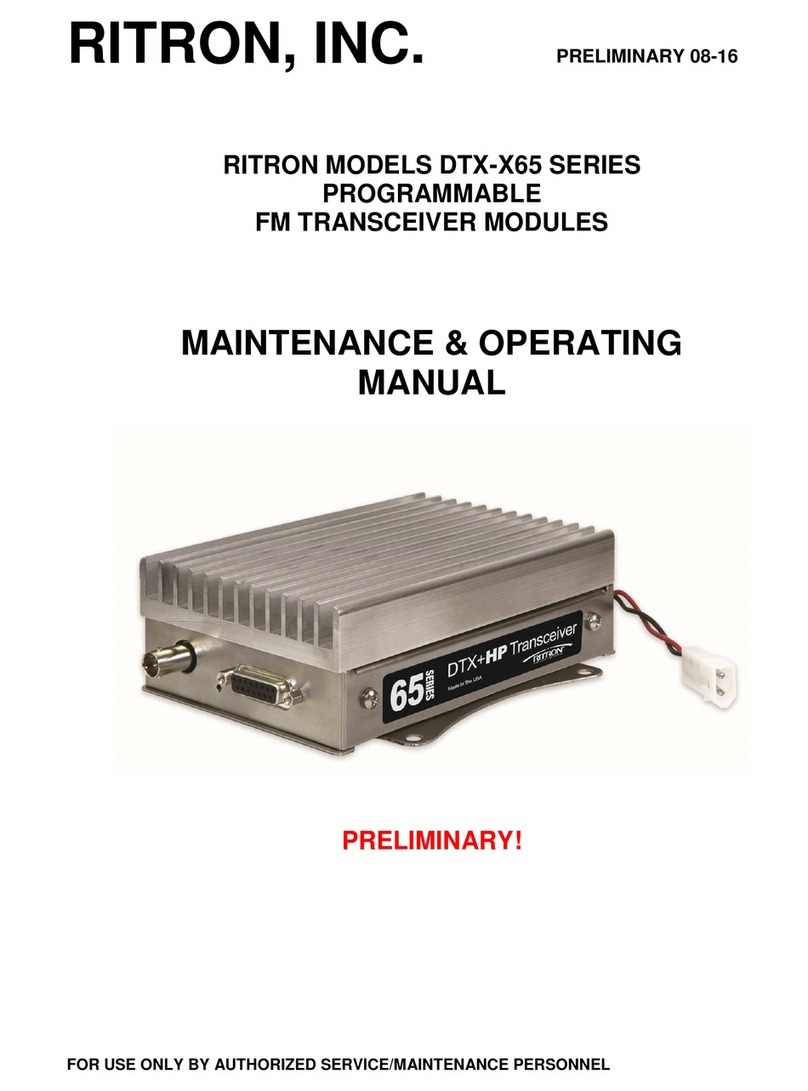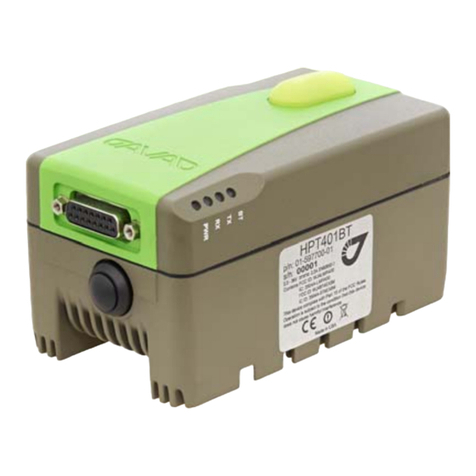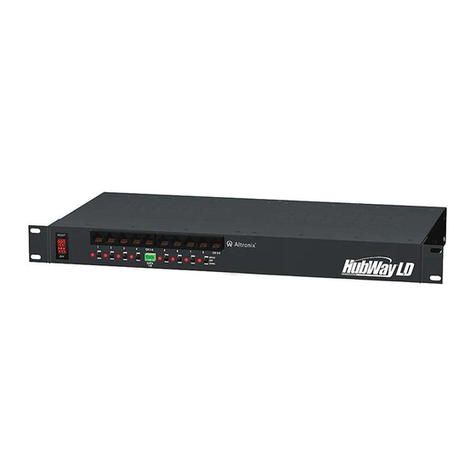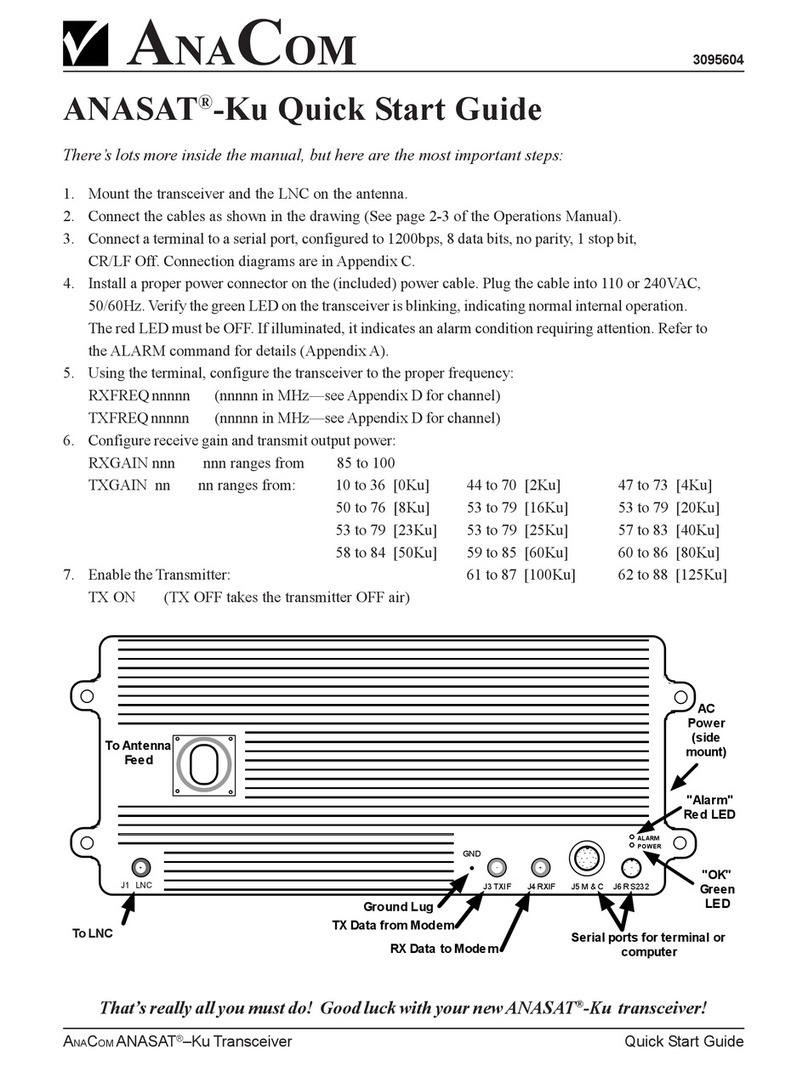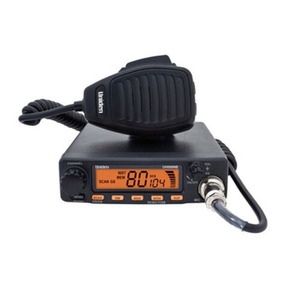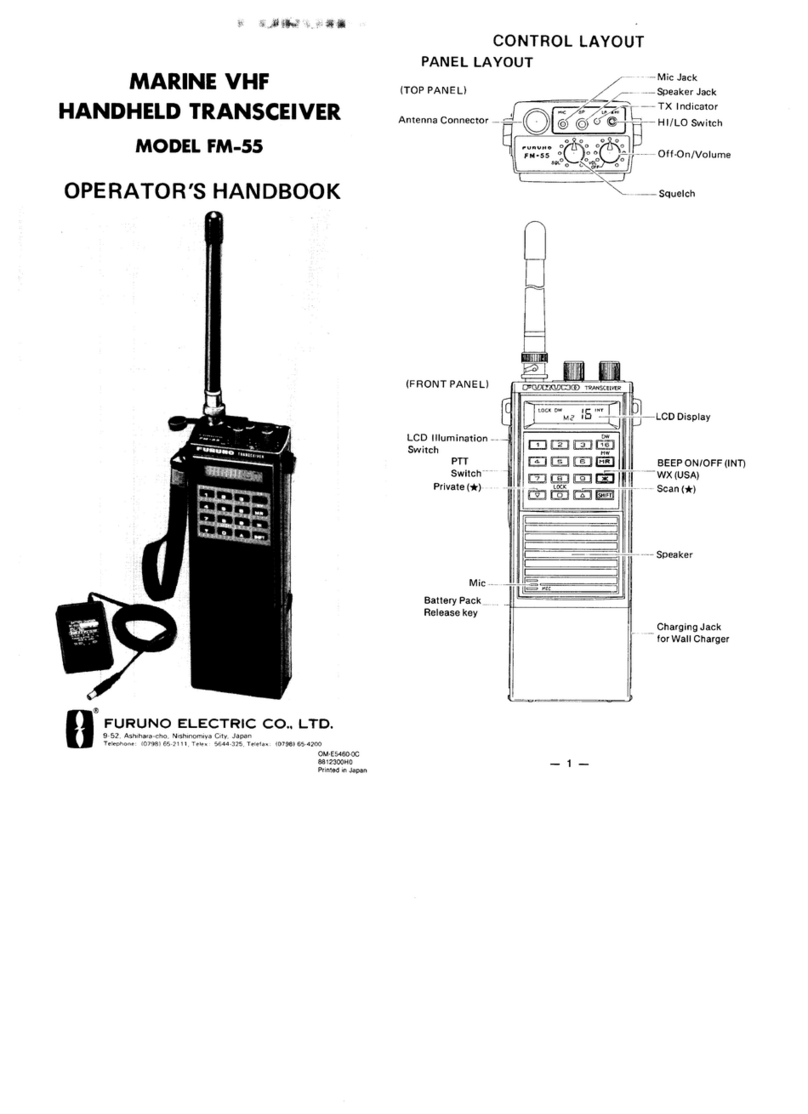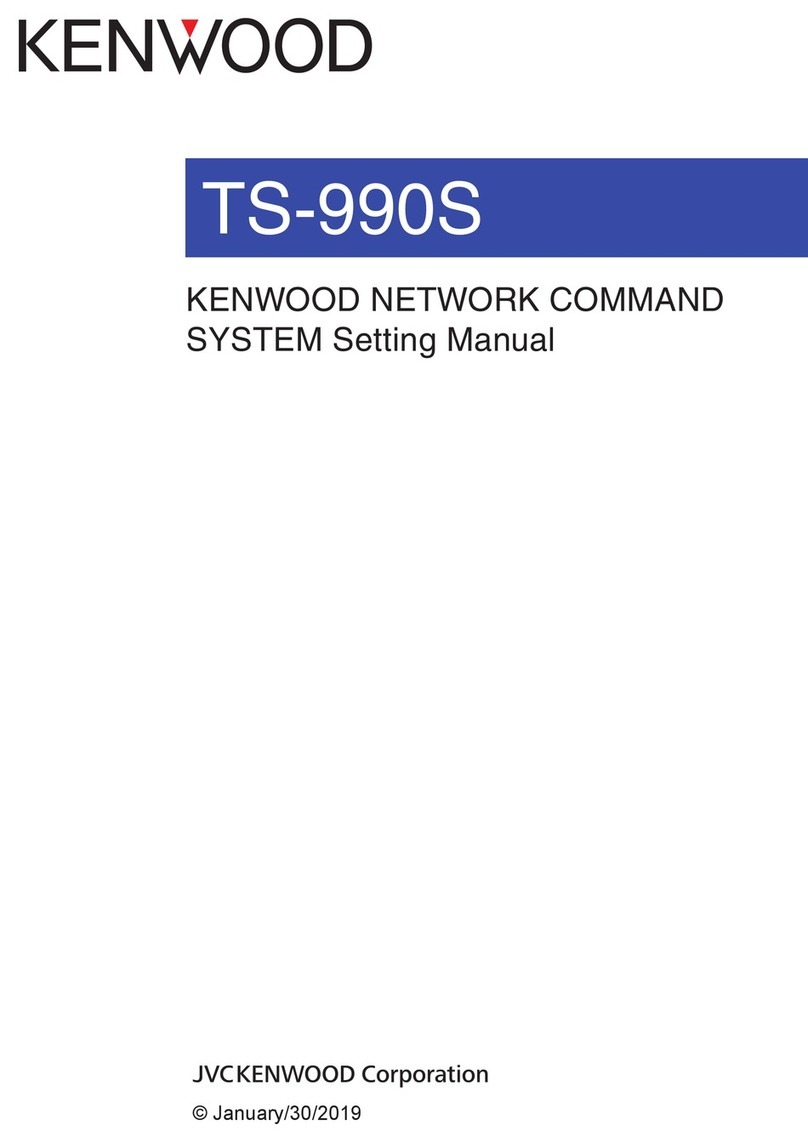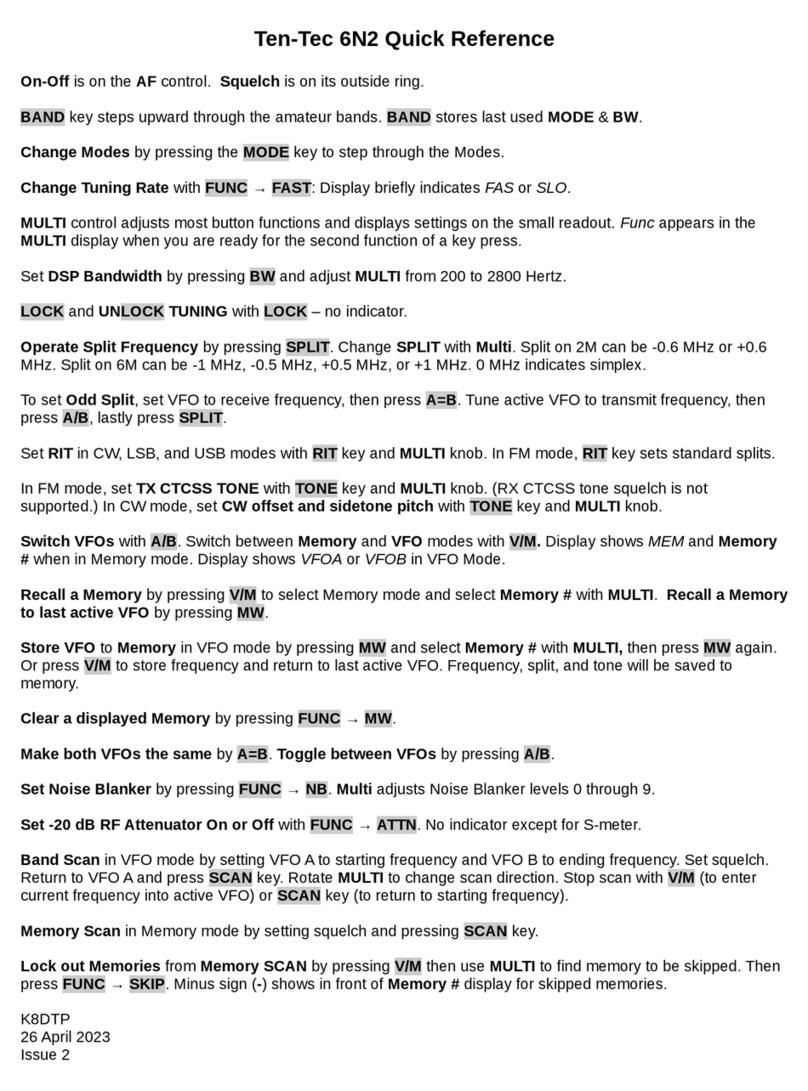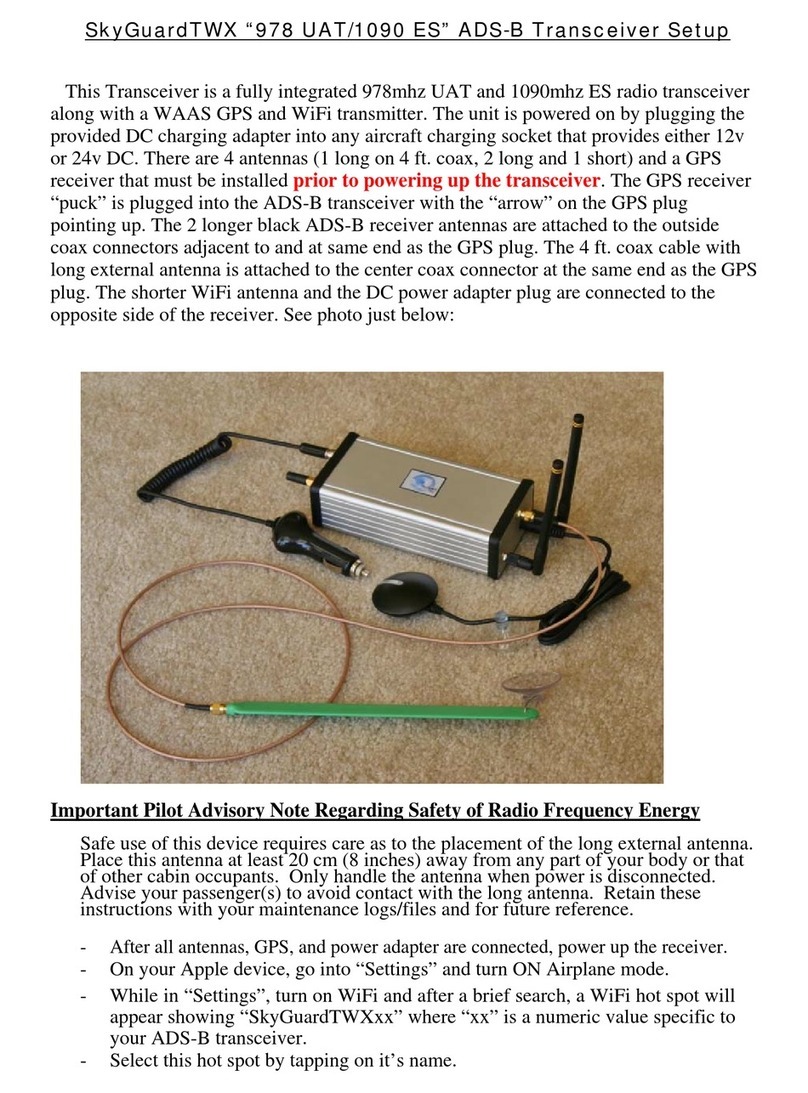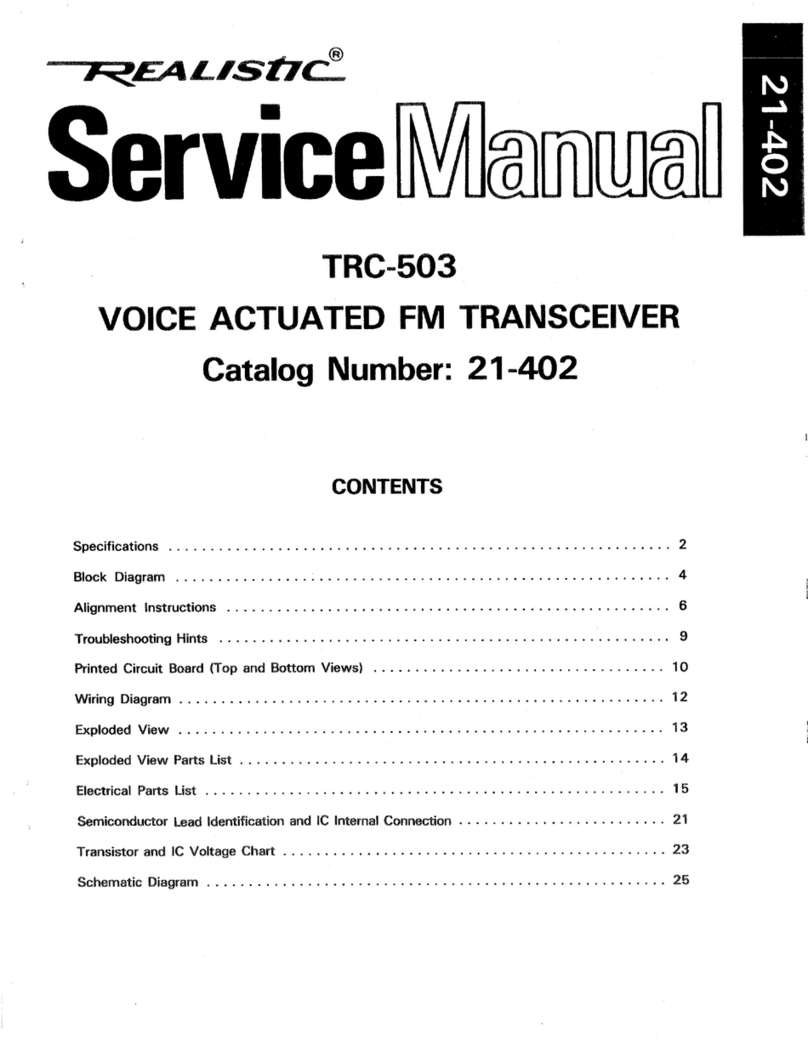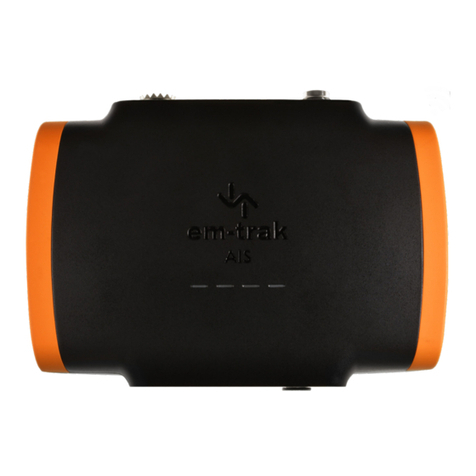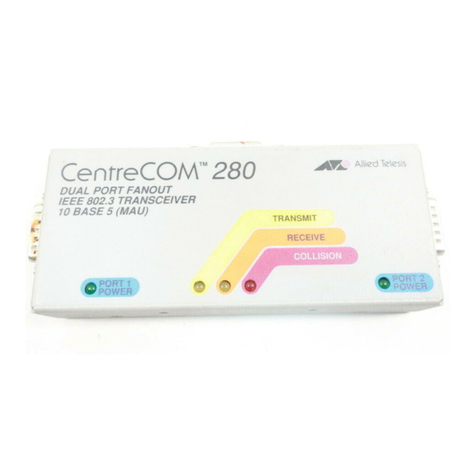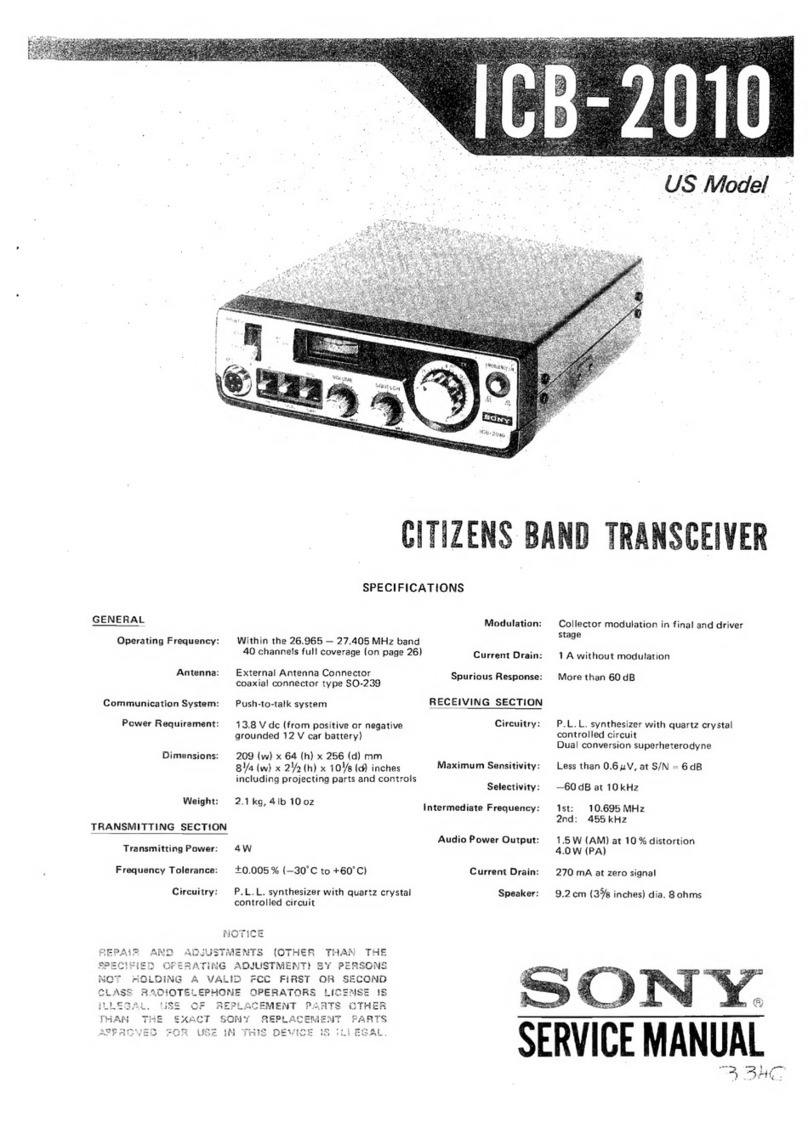
EVX-261 UHF Digital/Analog Transceiver Service Manual 7
Circuit Description
1. Receiver System
1-1. Front-end RFAmplifier
Incoming RF signal from the antenna passes through the
low-pass filter and the antenna switching diode D1004/
D1005 (both 1SS390), then reduce the RF signal to the
optimal level to the next stage by the digital attenuator
Q1054 (SKY12338).
The attenuated RF signal passes through the band-pass
filter and amplifier Q1022 (2SC5006), then remove the
undesired frequencies by the another band-pass filter.
The filtered RF signal is applied to the custom IC Q1044
(RODINIA) through the another digital attenuator Q1039
(SKY12338).
1-2. Demodulator
The custom IC Q1044 (RODINIA) converts a Base Band
signal by mixing the RF signal with the local signal, and
then the Base Band signal is demodulated by the another
section of the custom IC Q1044 (RODINIA).
The local signal is generated by the VCO which consists
of Q1028 (2SC5010) and varactor diodes D1012/D1013
(both 1SV279) or consists of Q1030 (2SC5010) and
varactor diodes D1016/D1017 (both 1SV279). The selec-
tion of the VCO (Q1028 or Q1030) is determined by the
receiving frequency.
1-3. Audio Amplifier
The demodulated signal is adjusted the audio volume
level in the custom IC Q1044 (RODINIA). The adjusted
the audio signal is applied to the audio amplifier Q1027
(TDA2822G) through the buffer amplifier Q1025
(NJM12904V). As a result, the audio signal provides up
to 700 mW (@16-ohm BTL) for internal speaker or up to
500 mW (@4-ohm OTL) for external speaker.
2. Transmitter System
2-1. MIC Amplifier & Modulator
The speech signal from internal microphone MC1001 or
external microphone J1003 is supplied to the custom IC
Q1044 (RODINIA), which modulates the speech signal to
the FM or digital signal.
2-2. Drive & Final Amplifier Stages
The modulated signal from the custom IC Q1044 (RO-
DINIA) is buffered by Q1026 (2SK3077) and amplified by
driver amplifier Q1020 (RQA0004PXDQS). The low lev-
el transmit signal is then applied to Q1012 (RQA0011DNS)
for final amplification up to 5 watts output power.
The transmit signal then passes through the antenna
switch D1002 (RN142S) and is low-pass filtered to sup-
press away harmonic spurious radiation before delivery to
the antenna.
2-3. Automatic Transmit Power Control
The current detector Q1006-1 (AD8566ARM) detects
the current of the final amplifier Q1012 (RQA0011DNS)
and the driver amplifier Q1020 (RQA0004PXDQS), and
converts the current difference to the voltage difference.
The output from the current detector Q1006-1
(AD8566ARM) is compared with the reference voltage
and amplified by the power control amplifier Q1006-2
(AD8566ARM).
The output from the power control amplifier Q1006-2
(AD8566ARM) controls the gate bias of the driver ampli-
fier Q1020 (RQA0004PXDQS) and the final amplifier
Q1020 (RQA0004PXDQS).
The reference voltage changes into two values (Transmit
Power High and Low) controlled by custom IC Q1044
(RODINIA).
3. PLL Frequency Synthesizer
The frequency synthesizer consists of VCO, TCXO
X1001, and the custom IC Q1044 (RODINIA).
The output frequency from TCXO X1001 is 19.2 MHz
and the tolerance is ±1.5 ppm in the temperature range
–22 °F to +140 °F (–30 °C to +60 °C).
3-1. VCO (Voltage Controlled Oscillator)
The VCO Q1028 or Q1030 (both 2SC5006) gener-
ates a between 806-970 MHz (Type “G6”), or 900-1040
MHz (Type “G7”). The selection of the VCO (Q1028 or
Q1030) is determined by the receiving or transmitting
frequency. The output from VCO (Q1028 or Q1030) is
amplified by buffer amplifier Q1035 (2SC5010) and then
is supplied to the custom IC Q1044 (RODINIA).
The VCO frequency is divided into two by the dividing
section of the custom IC Q1044 (RODINIA) in order to
become a true receiving or transmitting frequency.
In the reception, the RF signal convert a Base Band signal
by mixing with the divided VCO signal, and then supplied
to the demodulator section of the custom IC Q1044 (RO-
DINIA), described previously.
In the transmission, the divide VCO frequency is modu-
lated to the FM (or digital) in the custom IC Q1044 (RO-
DINIA), and then is supplied to the transmitter section
described previously.
3-2. Varactor Control Voltage
The tuning voltage (VCV) of the VCO establishes the
lock range of VCO by controlling the cathode of varactor
diode D1012, D1013, D1014and D1015 (all 1SV279)
for VCO Q1028, (or D1016, D1017, D1018 and D1019
(all 1SV279) for VCO Q1030), from the custom IC
Q1044 (RODINIA).
: Type “G6” only.
3-3. PLL
The main constitution product of the PLL is equipped all
with in the custom IC Q1044 (RODINIA), so that all pro-
cessing regarding the frequency control is performed in
the custom IC Q1044 (RODINIA).



















